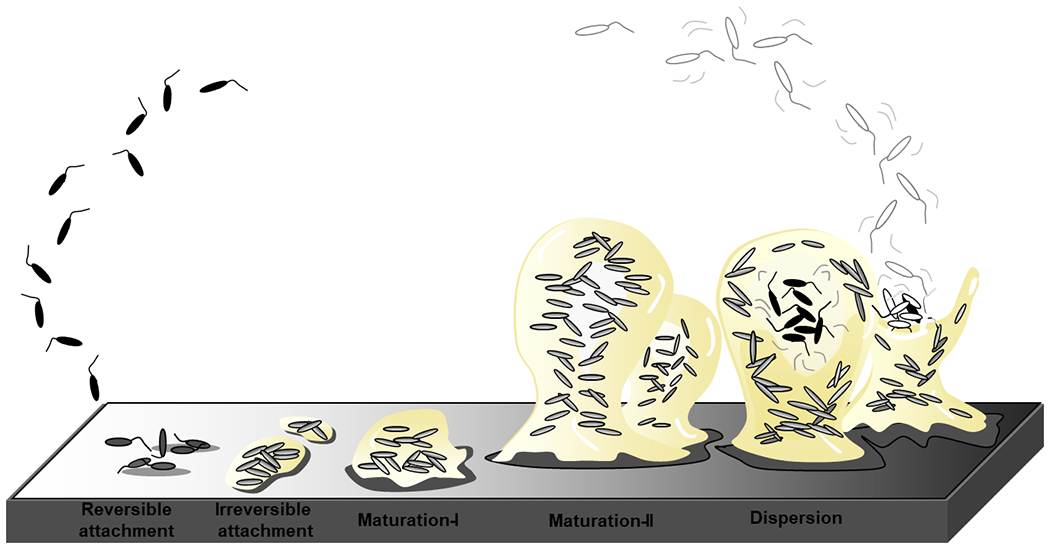Figure 1.

The stages of biofilm development as depicted in (26). The formation of biofilms is a cyclic process that occurs in a stage-specific and progressive manner. The process is initiated following surface contact by single planktonic cells. Several developmental steps are discernable as reversible attachment, irreversible attachment and biofilm maturation (maturation-I and -II)(26, 43). During reversible attachment, bacteria attach to the substratum via the cell pole or via the flagellum (step I), followed by longitudinal attachment. Transition to the irreversible coincides with a reduction in flagella reversal rates, reduction in flagella gene expression and the production of biofilm matrix components. This stage is also characterized by attached cells demonstrating drug tolerance(44). Biofilm maturation stages are characterized by the appearance of cell clusters that are several cells thick and are embedded in the biofilm matrix (maturation-I stage) which subsequently fully mature into microcolonies (maturation-II stage)(26, 43). Dispersion has been reported to coincide with the decrease in and degradation of matrix components, with dispersed cells being motile and demonstrating increased drug susceptibility relative to biofilm cells. The biofilm matrix is shown in beige.
